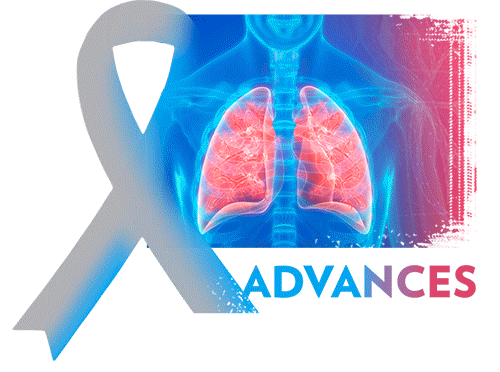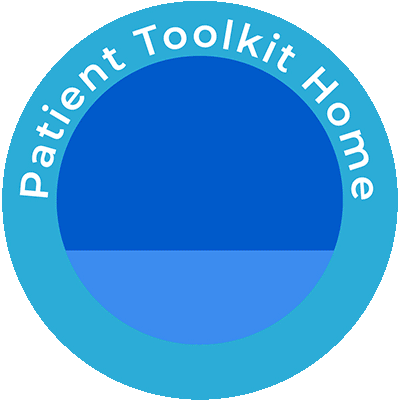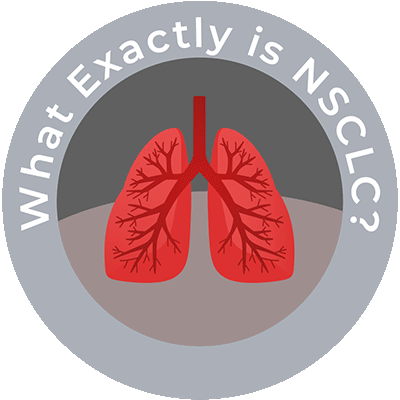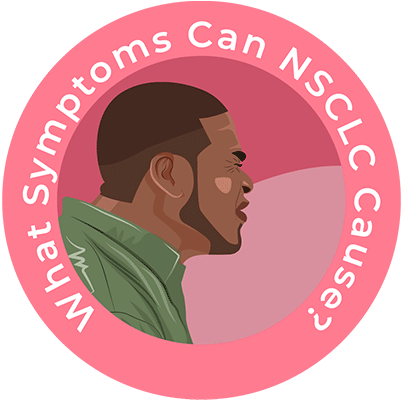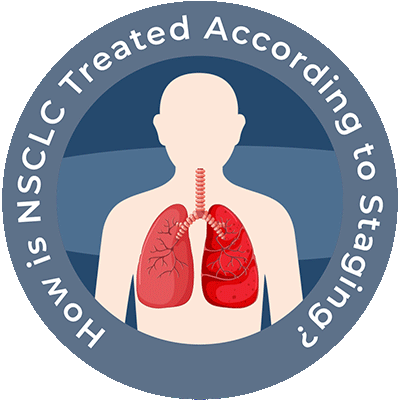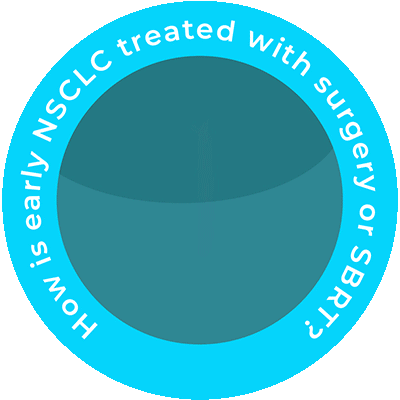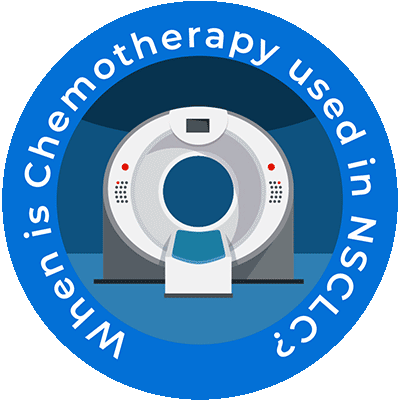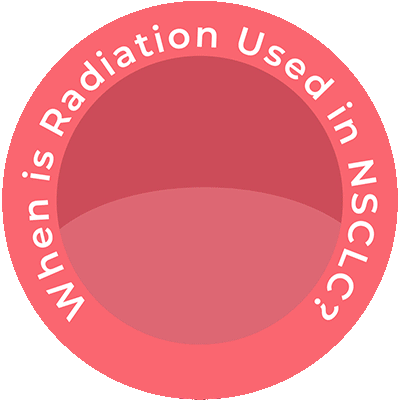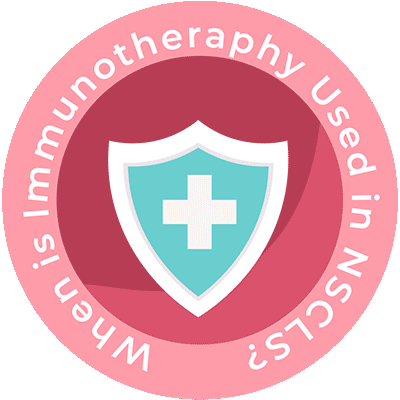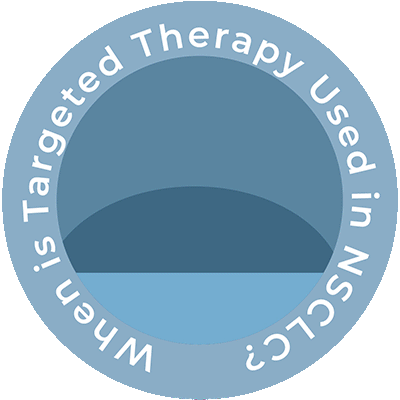What exactly is non-small cell lung cancer?
Non-small cell lung cancer (NSCLC) is a type of lung cancer, in which cells in the lung grow abnormally and form a tumor. Lung cancers typically start in the cells lining the bronchi and parts of the lung, such as the bronchioles or alveoli (Figure 1).
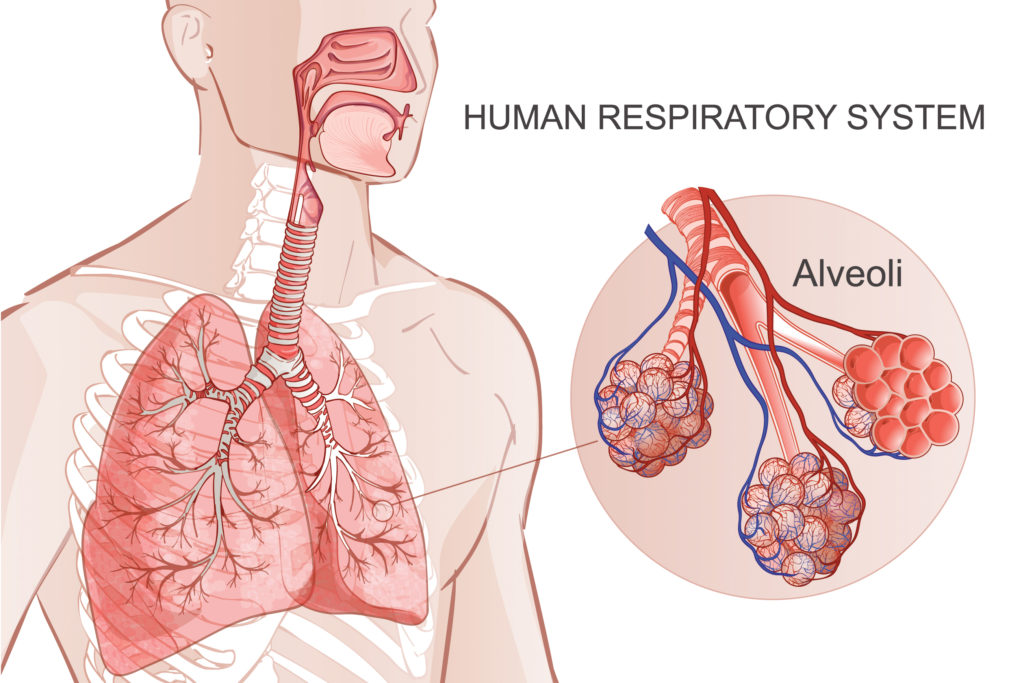
Most lung cancers (~85%) of lung cancers are NSCLC.
There are three types of NSCLC. The subtypes of NSCLC are based on the different types of cells that can be seen in the lung cancer tissue under a microscope.
- Adenocarcinoma – this type of NSCLC is the most common. Adenocarcinoma affects more women than men. Adenocarcinoma is usually found in the outer parts of the lung (alveoli) and is more likely to be diagnosed before it has spread to other parts of the lung.
- Squamous cell carcinoma – this type of NSCLC starts in squamous cells, which are flat cells that line the inside of the airways in the lungs. This cancer tends to be found in the middle part of the lungs, near a main airway (bronchus). Patients with squamous cell carcinoma often have a history of smoking. This type of cancer tends to grow more quickly and spreads earlier to other parts of the body.
- Large cell (undifferentiated) carcinoma – this type of NSCLC can be found in any part of the lung. It tends to grow and spread quickly, which can make it harder to treat.
Doctors and scientists are still trying to fully understand the exact causes of NSCLC, but they know that it is more commonly linked in people who have smoked tobacco products or those exposed to secondhand smoke. The risk of lung cancer for people who smoke or smoked is many times higher than for people who never smoked. The longer a person smokes and the more packs a day smoked, the greater the risk. Secondhand smoke is thought to cause more than 7,000 deaths from lung cancer each year.
Lung cancer can also occur in people who never smoked. Other risk factors for lung cancer include exposure to radon or asbestos. Radon is a naturally occurring radioactive gas that results from the breakdown of uranium in soil and rocks. It cannot be seen, and has no taste or smell. According to the US Environmental Protection Agency (EPA), radon is the second leading cause of lung cancer in the United States, and is the leading cause of lung cancer in people who never smoked. People exposed to asbestos that can be found in mines, mills, textile plants, insulation, and shipyards are also more likely to die of lung cancer. The risk is increased in people who are exposed to asbestos and smoke.
Other risk factors for lung cancer include air pollution and genetics (a history of lung cancer in your family).
References
American Cancer Society
https://www.cancer.org/cancer/lung-cancer/about/what-is.html
American Thoracic Society
https://www.thoracic.org/patients/patient-resources/resources/lung-cancer-intro.pdf
